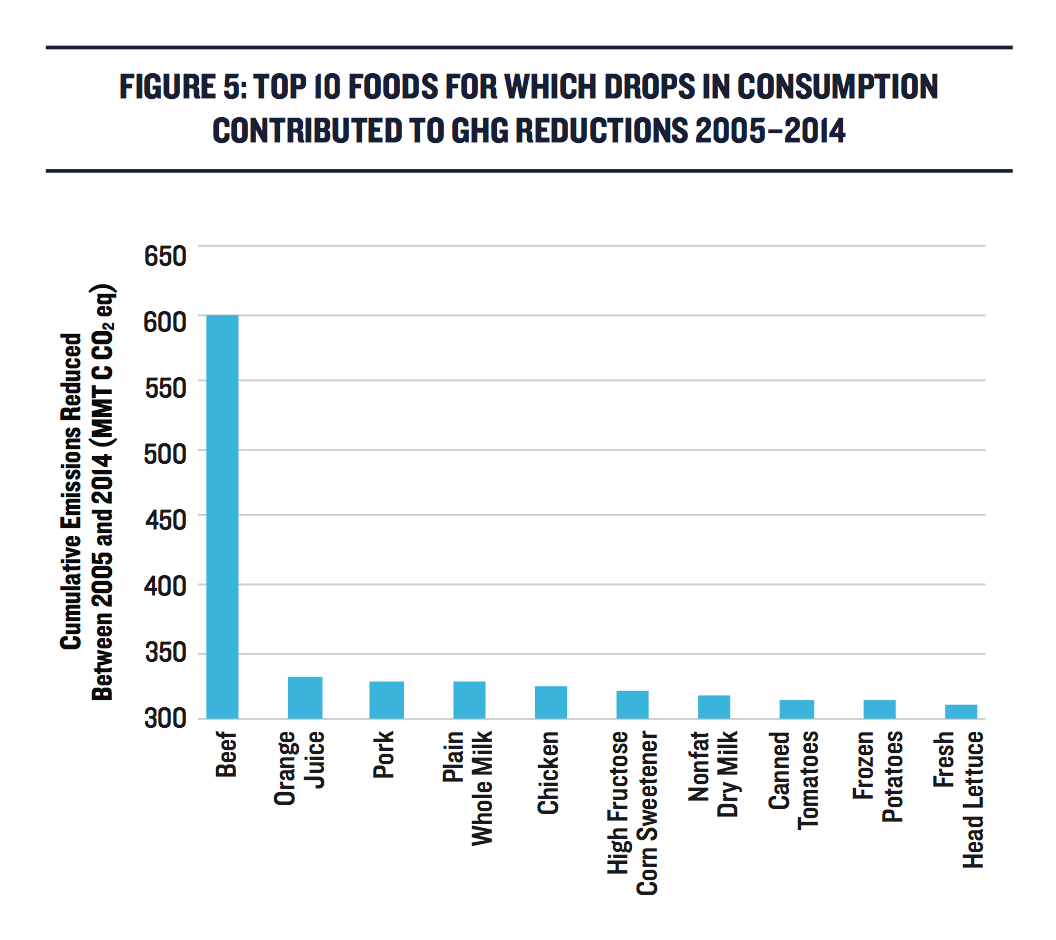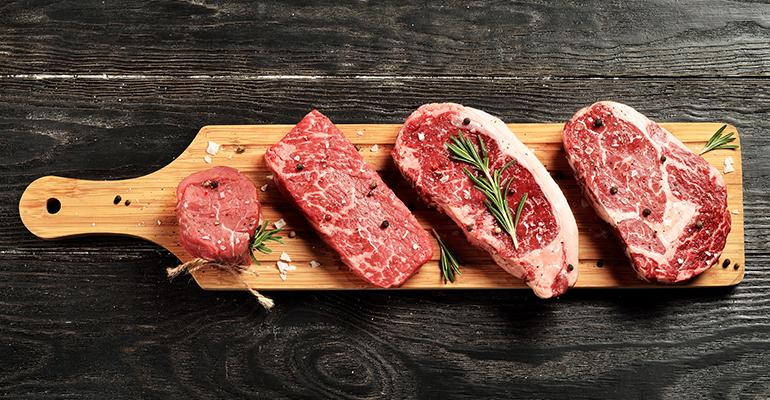Americans reduced their beef consumption by 19 percent between 2005 and 2014, which was the equivalent of avoiding the annual tailpipe emissions from about 39 million cars, according to a report on Wednesday by the Natural Resources Defense Council.
Using data from the U.S. Department of Agriculture, the report analyzed the carbon-footprint impact of the production of certain foods. The NRDC has long argued that beef in particular contributes more climate-warming pollution than other foods in the American diet.
The National Cattlemen’s Beef Association, however, challenged the NRDC’s connection between consumption and the carbon-footprint impact, saying the reduction in per capita consumption more likely reflects population growth.
Per capita consumption of beef has declined, according to independent market research firm CattleFax, reaching a low of 54 pounds per person on average in 2015, down from an average of 65 pounds per person in 2005.
But that’s more likely tied to cycles of supply and demand, said Duane Lenz, general manager of CattleFax.
“You can’t eat what you don’t have,” he said.

Graph: Food consumption trends tied to greenhouse gas reductions, courtesy of Natural Resources Defense Council.
Following years of drought in the West, herd sizes contracted, but are now in a rebuilding phase, he said. As a result, beef consumption will likely increase.
“We are projecting that, by 2018, average consumption will be back up to 57.5 pounds per person,” Lenz said.
Still, beef production has remained relatively steady during that period, said Sara Place, the Cattlemen’s Association’s senior director of sustainable beef production research.
Global demand for U.S. beef has grown, and a growing amount of meat produced domestically is exported.
That doesn’t mean the industry isn’t concerned about its impact on the environment, Place said.
The carbon-footprint impact of beef production has decreased by 6 percent, she said. Beef production contributed total emissions of 135.7 million metric tons of carbon dioxide in 2005, according to the Environmental Protection Agency. By 2014, that dropped to 127.5 million metric tons.
“We’ve made some tremendous progress,” Place said. “But there’s work to do. I’ve been hired because the industry is curious about sustainability and getting better over time.”
The NRDC report did not offer a reason for the decline in beef consumption.
According to the NRDC’s report, beef comprised about 34 percent of total diet-related per capita climate-warming pollution in 2014.
Producing a kilogram of beef emits 26 kilograms of carbon dioxide, the NRDC said.
Meat and dairy production requires large amounts of corn- and soy-intensive animal feed. Dairy cows emit large amounts of methane gas, and the use of fertilizers and manure deposits release nitrous oxide, a climate pollutant more powerful than carbon dioxide, the environmental advocacy group contends.
Overall, Americans shrunk their diet-related carbon footprint by 10 percent during that nine-year period. In addition to beef, Americans ate less milk, pork, shellfish and high-fructose corn syrup.
At the same time, Americans ate more carbon-intensive foods like cheese, yogurt and butter, the report said.
Contact Lisa Jennings at [email protected]
Follow her on Twitter: @livetodineout





